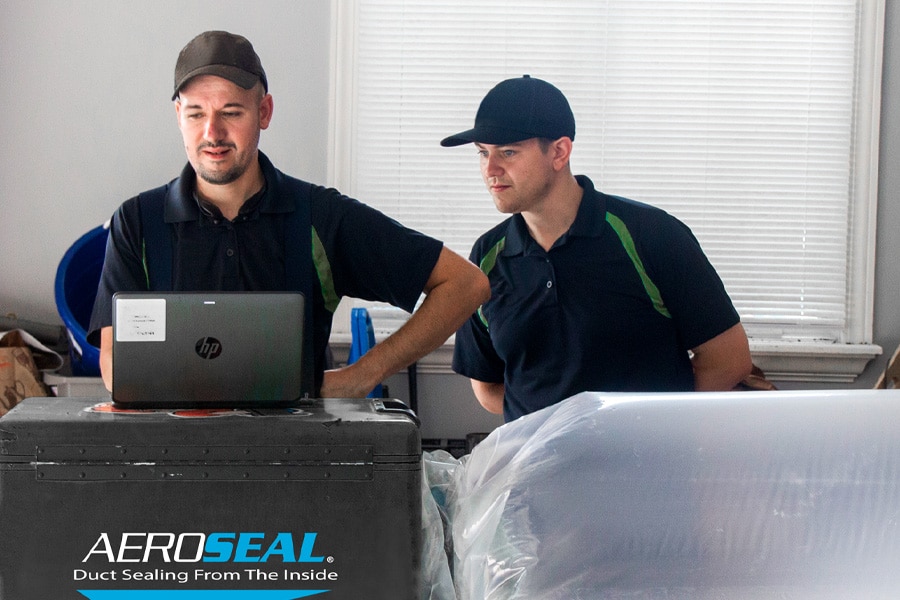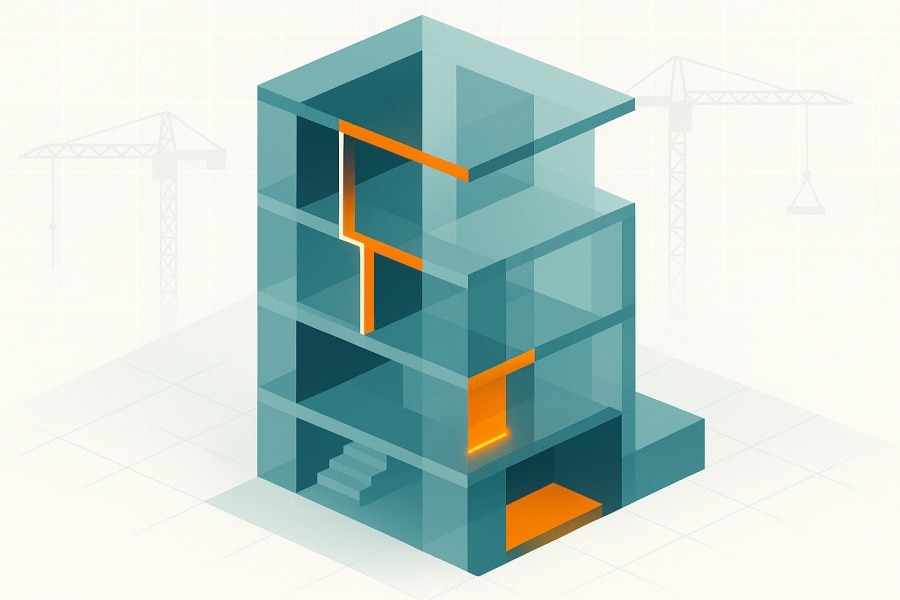Retrofitting a building to increase energy efficiency is one of the most effective ways to reduce building maintenance costs, but that work can be expensive. Moreover, antiquated ductwork can be costly and expensive to replace, meaning that construction industry stakeholders often opt to simply keep paying for excess energy—a decision that’s as bad for the environment as it is for the bottom line.
That’s where Aeroseal comes in. This technology allows for the comprehensive retrofitting of old buildings to make them more energy efficient without the costs and hassle associated with conventional construction materials. Here’s what Peter Eberly, Aeroseal’s senior director of marketing, had to say about the company’s technology, and why energy efficiency needs to be top of mind for more construction professionals.
A long road to market
The Aeroseal story began in the 1990s, when Dr. Mark Modera was working on projects for the U.S. Department of Energy at the Lawrence Berkeley National Laboratory. “His focus there was on building inefficiencies, and he quickly learned of the enormous problem that leaky ductwork plays in energy-inefficient homes and buildings,” Eberly said.
With some funding, Modera invented the first iteration of Aeroseal’s technology, which Eberly described as “an aerosolized duct sealing technology that injects a fog of sealant particles into pressurized spaces and utilizes physics to pull the particles to the leaks in the ductwork.” But Modera’s attempts to bring the technology to market were all thwarted by his busy academic and research career. He knew he needed outside help. Eventually, the idea landed on Amit Gupta’s desk.
“Amit had developed a reputation as someone who could take the oddball products and make something out of them,” Eberly said. “As he learned more about the duct sealing technology, he realized that Aeroseal had enormous potential to tackle an increasingly obvious challenge that we collectively face: the foundational threat of climate change and the role that buildings and homes play in greenhouse gas emissions.” Amit believed that Modera’s technology could provide a valuable solution to this problem.
How Aeroseal works
So what got Gupta so excited about Aeroseal? Eberly said it’s the dramatic difference from old school duct sealing measures.
“Other air duct sealing measures are manual and imprecise in nature,” Eberly said. “Getting access to ductwork in finished spaces can also be tricky. Additionally, our ability to precisely measure impact—by measuring the leakage before sealing and comparing with leakage after sealing—means that our technologies can help meet code requirements for new construction.”
The Aeroseal process is built around two core technologies: the company’s duct-sealing systems and a building envelope system it calls AeroBarrier.
“The process is straightforward,” Eberly said. “We inject a fog of sealant particles into pressurized spaces, either the ductwork or the building envelope. Because the space is pressurized, the sealant particles find the leaks. Software tracks the entire process and is able to measure leakage before and after the seal.”
Before beginning a duct-sealing project, Eberly said the team does a comprehensive test. “First, we block all your vents and registers to pressurize your system. This pressurization allows our technology to find all the cracks and holes where air is leaking. Next, we conduct a comprehensive test of your air duct system.”
After sealing all leaks, the team distributes its sealant formula throughout all air and vent ducts, monitoring the system’s performance and showing clients improvements as they happen. “Our technology is so precise that we only use the amount of sealant necessary with virtually no waste and very little cleanup,” Eberly said.
The system works similarly when running an AeroBarrier building envelope sealing process. First the team covers any openings that won’t be sealed, before setting up its blower door, smart sealing stations and main control unit.
The space is pressurized automatically, and as Eberly explained, “the computer controls the entire process including the temperature, pressure, humidity and distribution of sealant within the space during the process.” Monitoring the results in real time, construction can resume within half an hour after work is completed.
Why more airtight buildings are the future
Eberly believes that “sealing leaky ductwork is one of the most impactful ways to improve energy efficiency in the built environment.”
This work is critical due to the pressing need for greener built spaces. “We are in a race against time as we collectively battle climate change,” Eberly said. “We must tackle improving energy efficiency and mitigating carbon emissions on all fronts, including the built environment. Aeroseal’s technologies have enormous potential to boost energy efficiency in all homes and buildings. Our mission is to shrink carbon emissions with our breakthrough technologies—1 gigaton of CO2 annually.”
Eberly said that sealing ductwork can help dramatically improve the energy efficiency of existing structures. “Sealing ductwork can play a significant role in making existing buildings much more energy efficient,” he explained. “Homes and buildings consume 40% of the nation’s energy, but an average of 30% of this energy is wasted, according to the Department of Energy. This energy is wasted, in large part, through small leaks in heating and cooling ductwork.”
But manual sealing is imprecise and can be impractical. Eberly believes that Aeroseal is a better way. “Aeroseal’s duct sealing technology is the only measurable way to seal the ductwork in existing homes and buildings,” he said. “Our software can measure before and after leakage to understand impact, and our technologies can reach what would be otherwise unreachable areas of the ductwork behind walls and ceilings. Our technologies produce measurable results—software measures the impact of leakage before sealing and after sealing to understand energy efficiency impact. This enables us to meet performance construction goals and codes during new construction.”
As the Aeroseal team moves forward, Eberly said it hopes to make the technology easier to access for people in the construction industry and beyond. “Our engineering teams are focused on making our technologies faster, smaller and more efficient—which we feel are key factors to driving adoption and scale,” he explained. “Additionally, there are macroeconomic factors that we feel will accelerate adoption that we need to take advantage of. Utility incentives, coupled with incentives from the Inflation Reduction Act, will make the adoption of these technologies more economical.”












